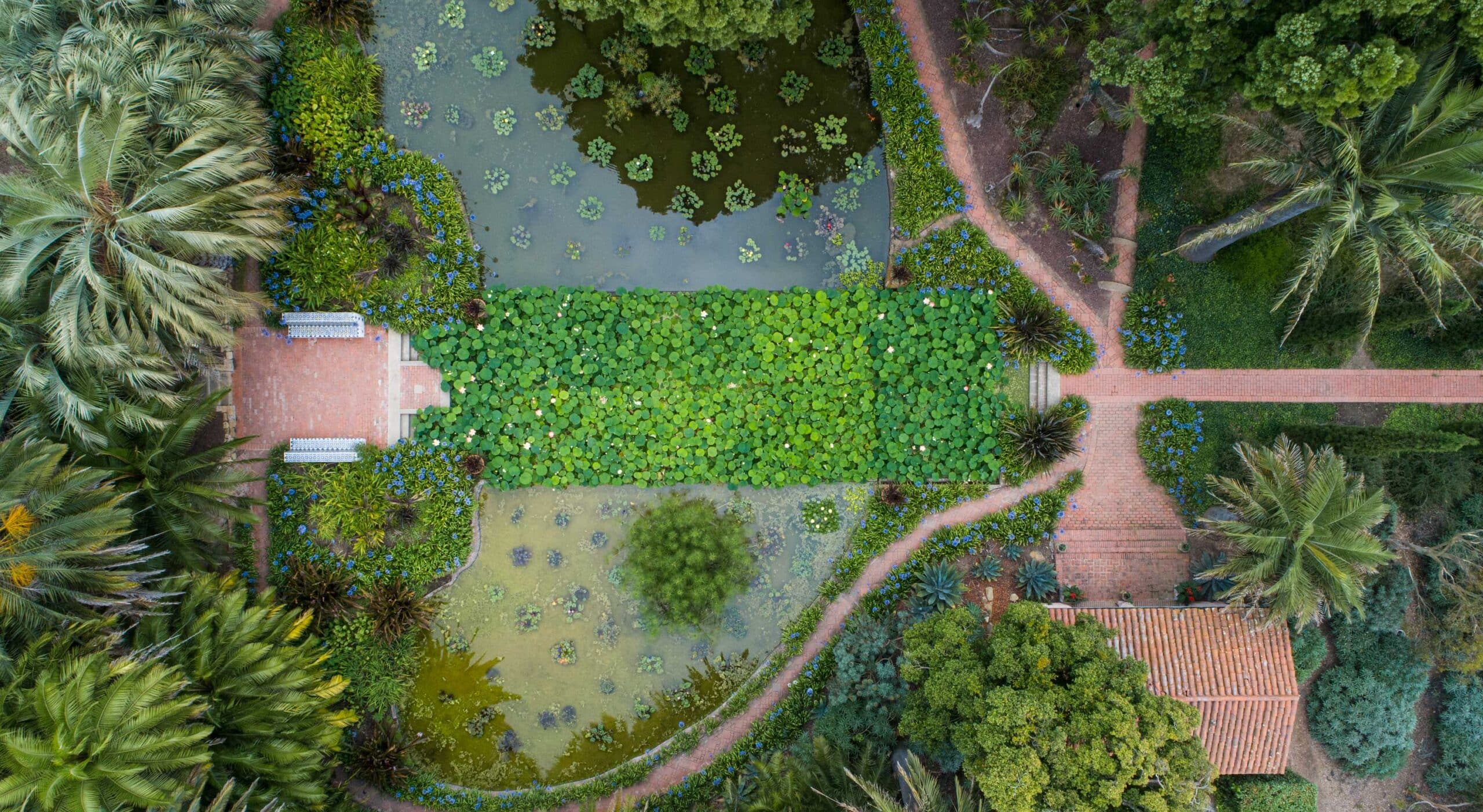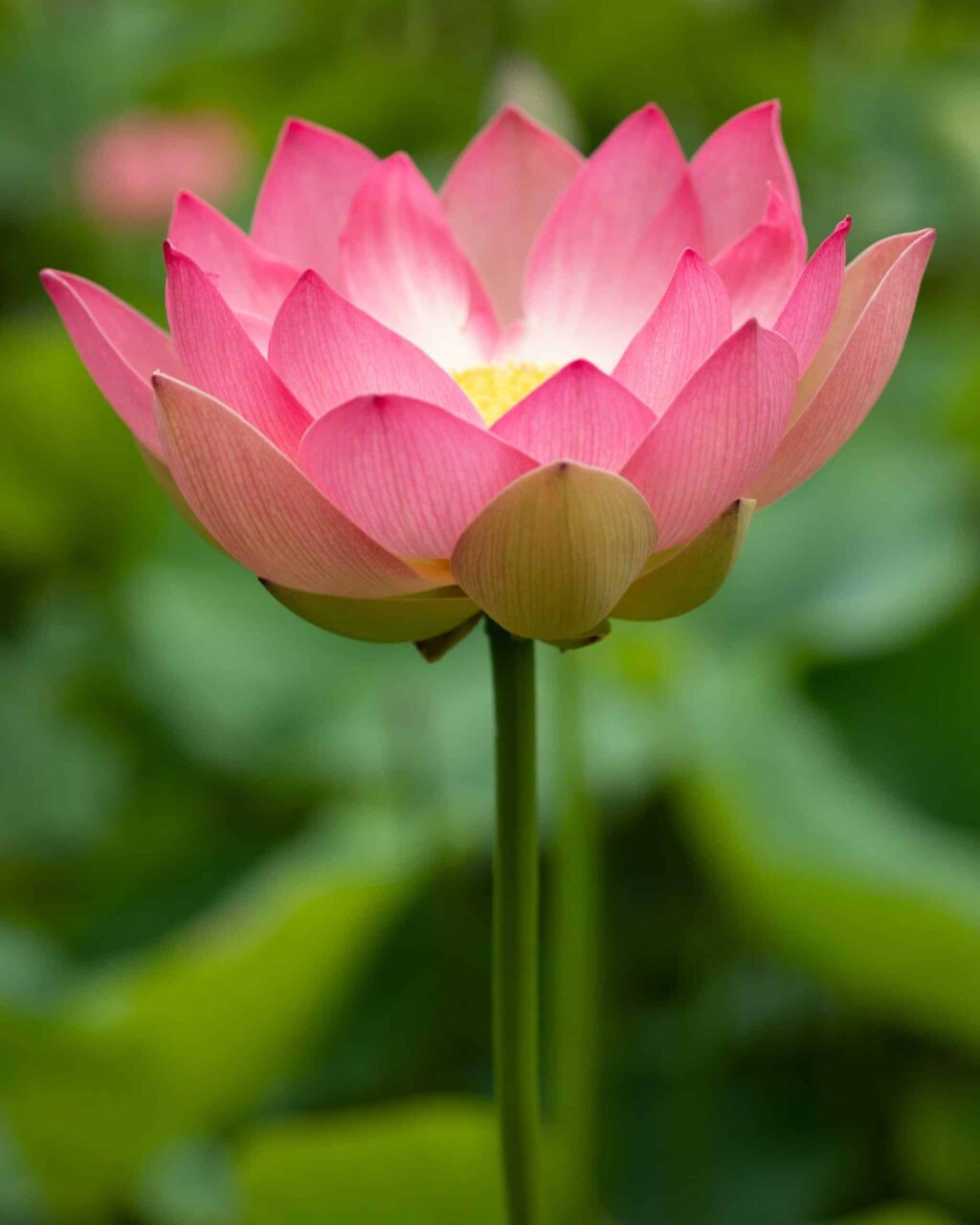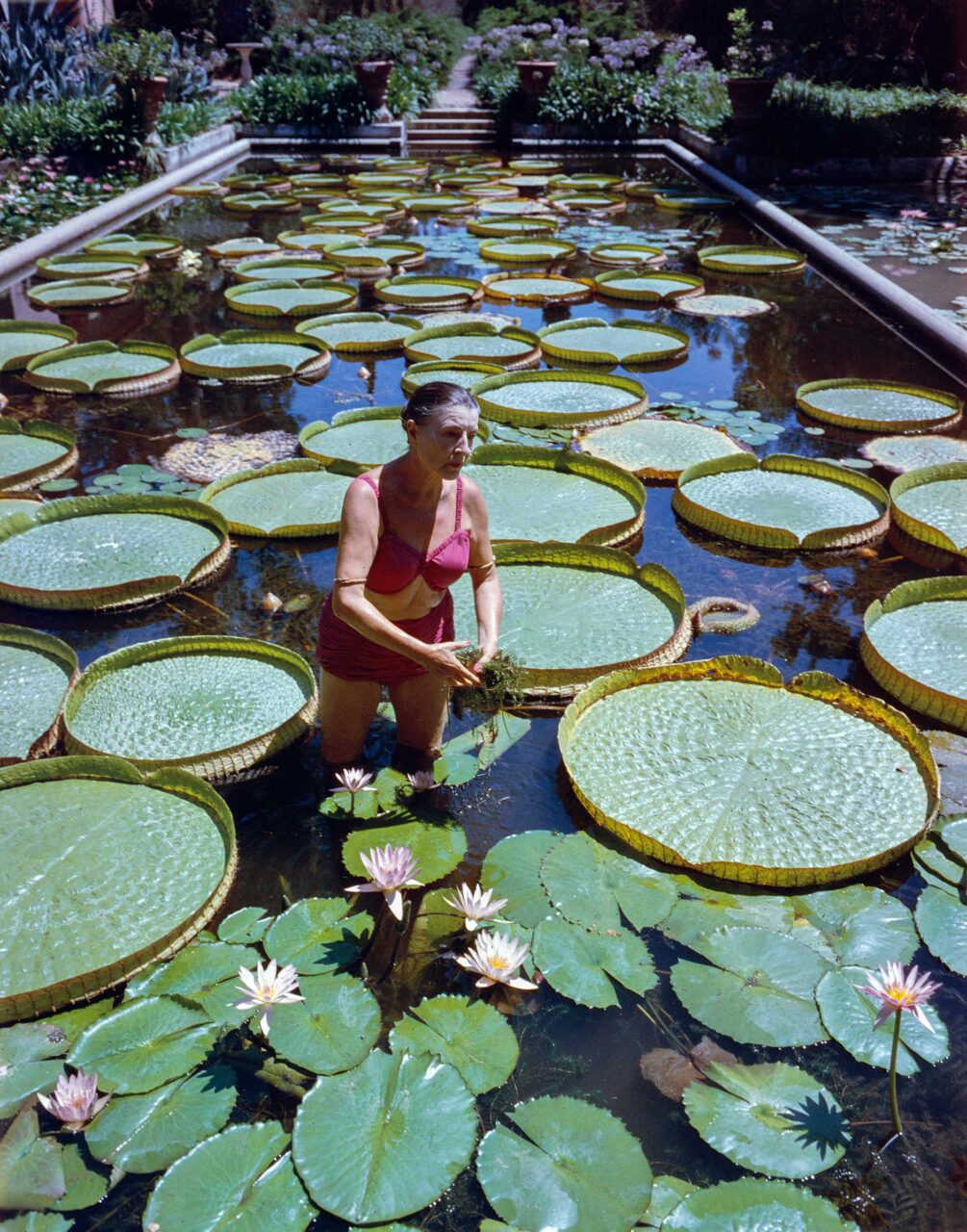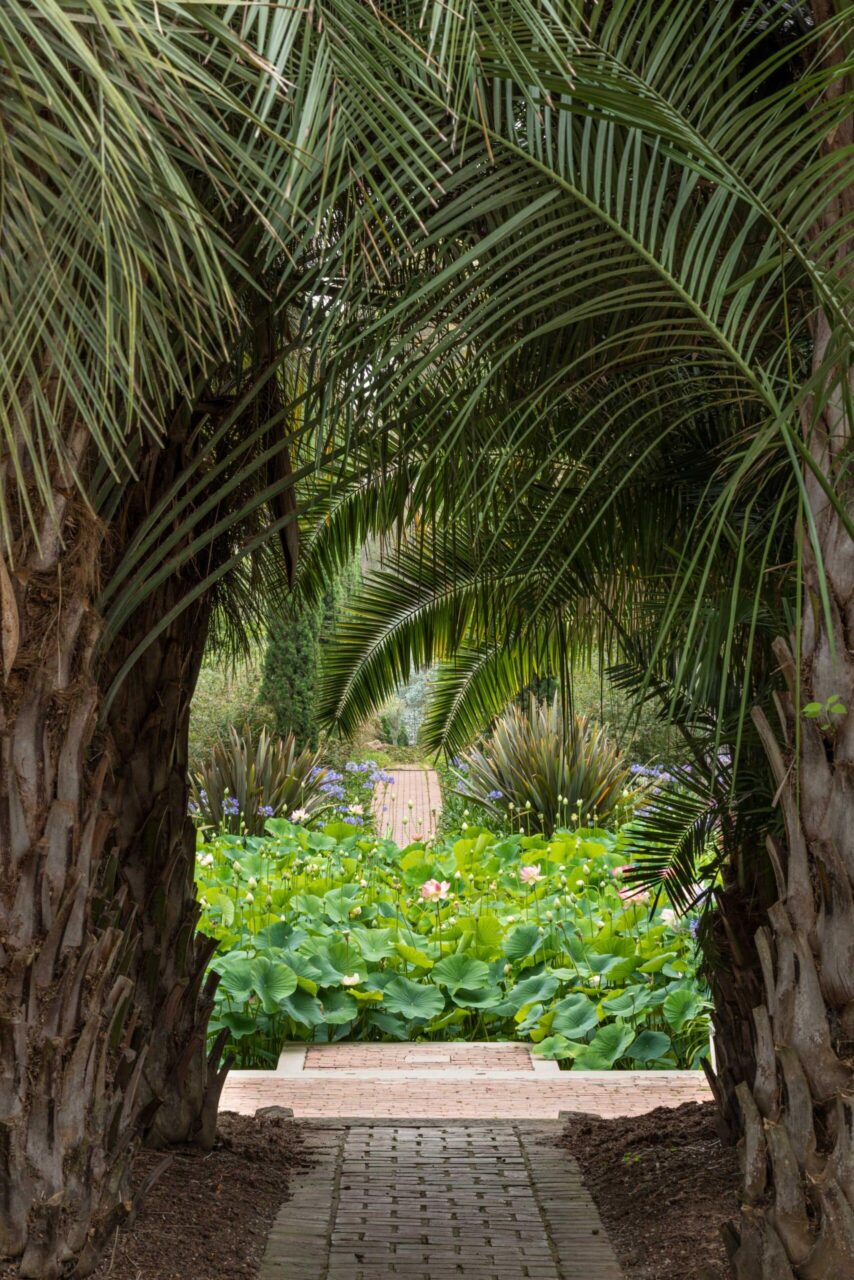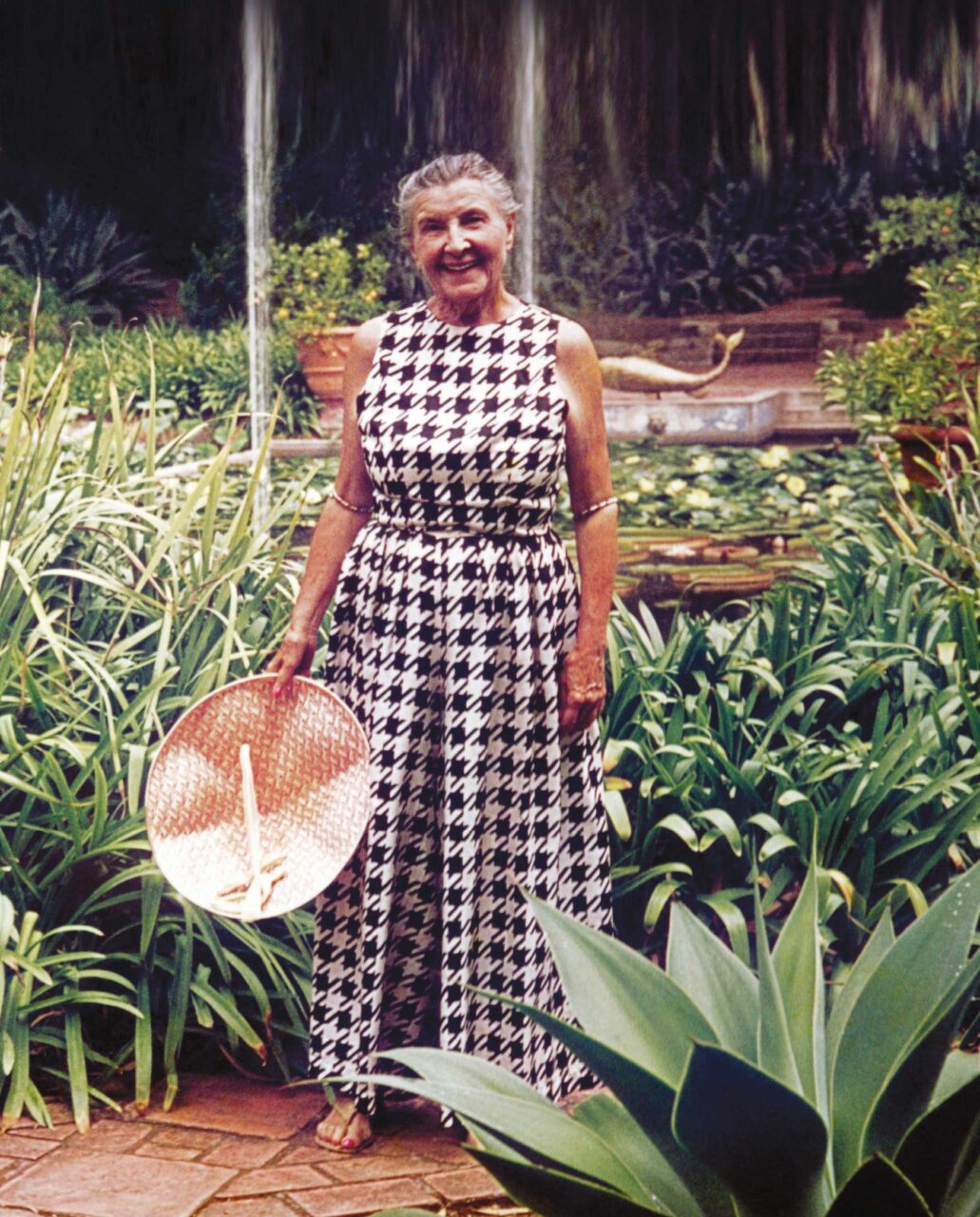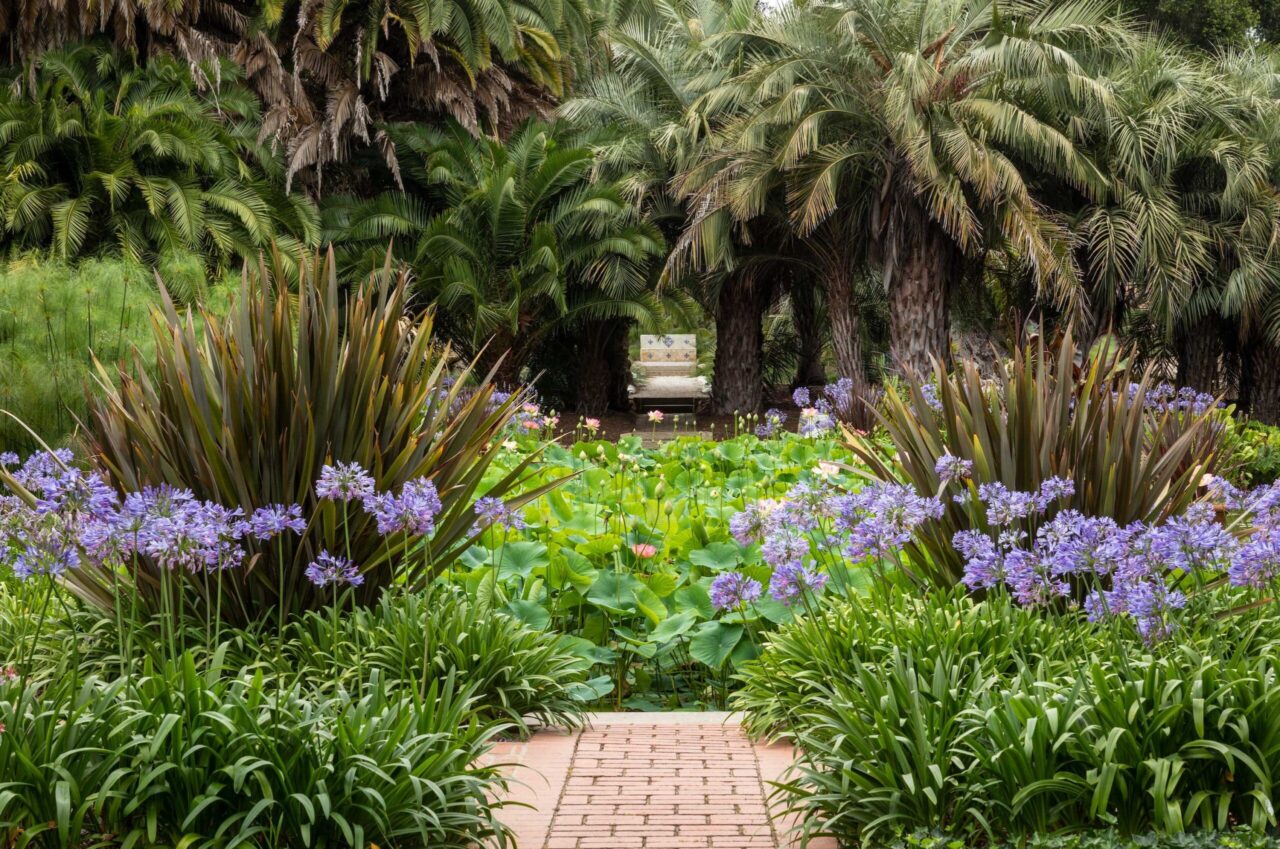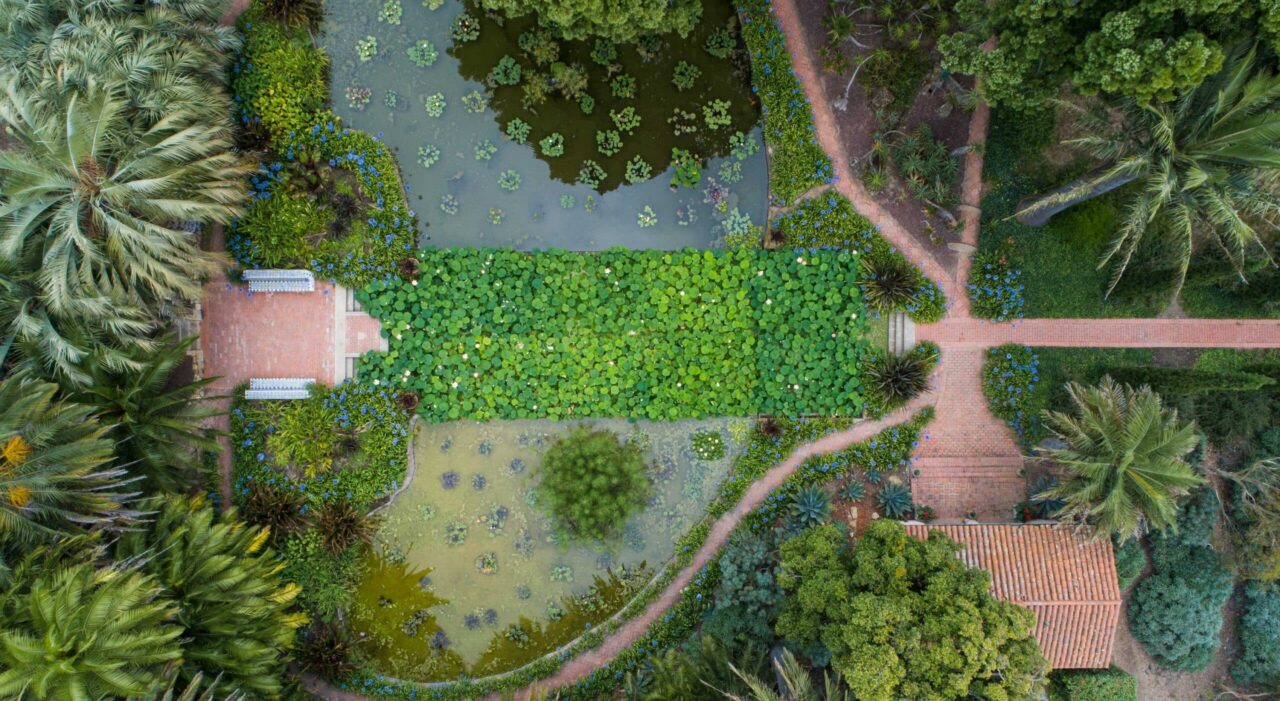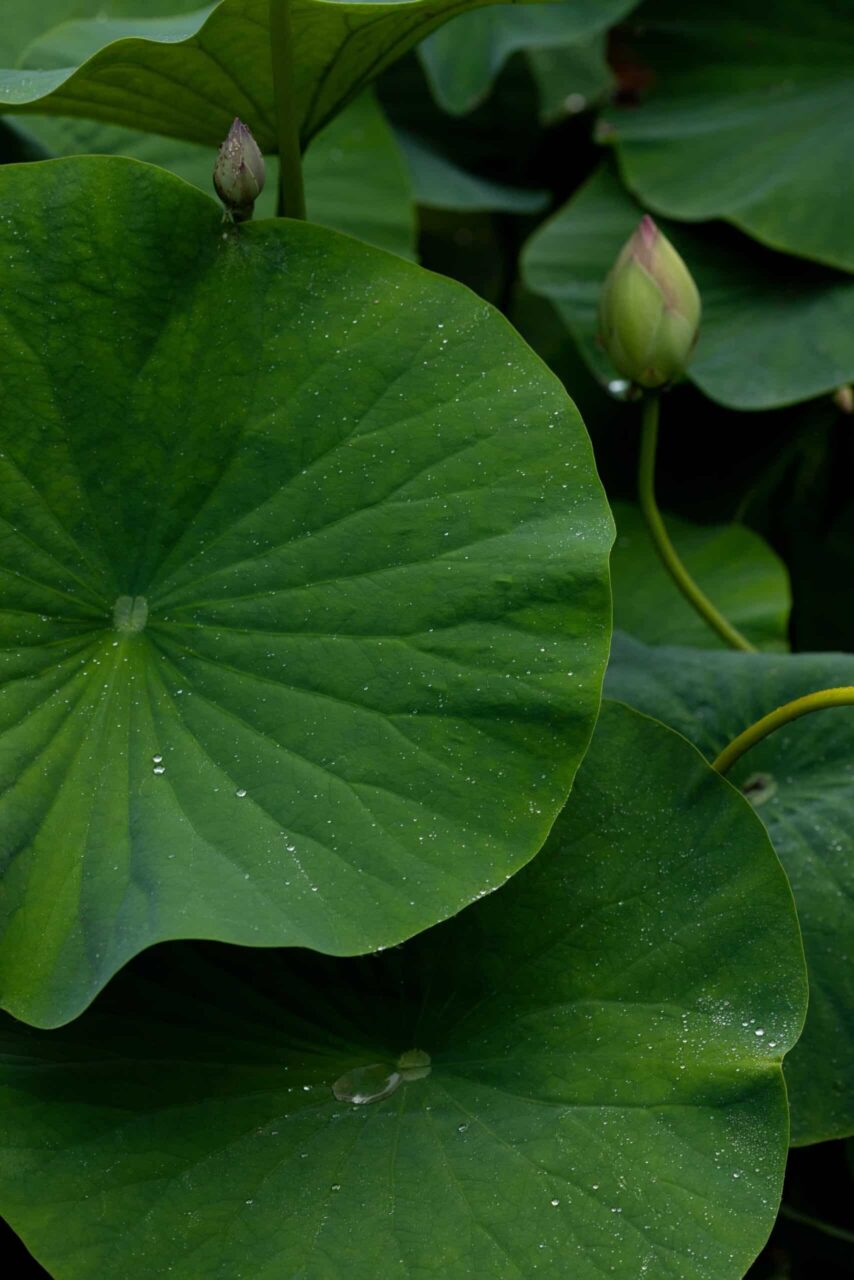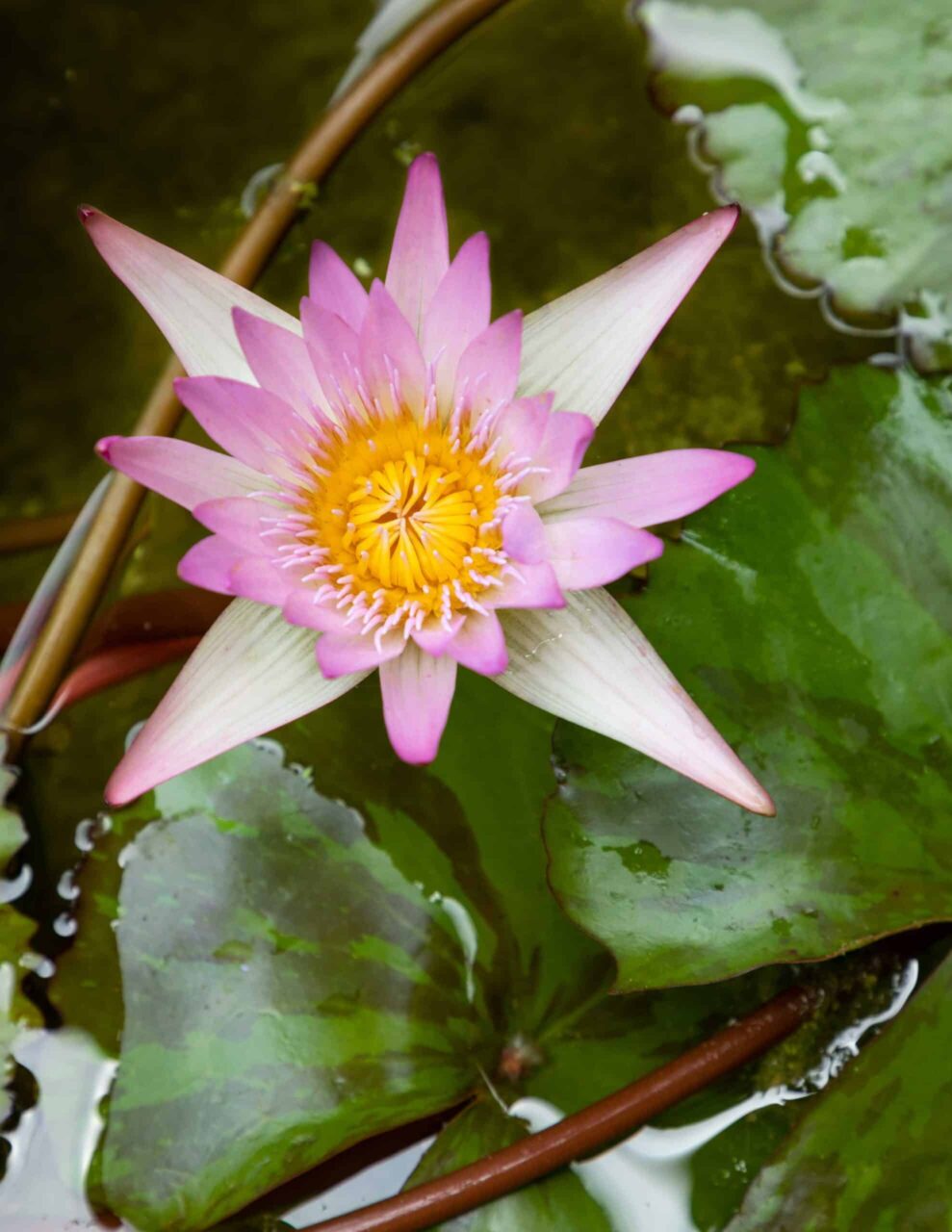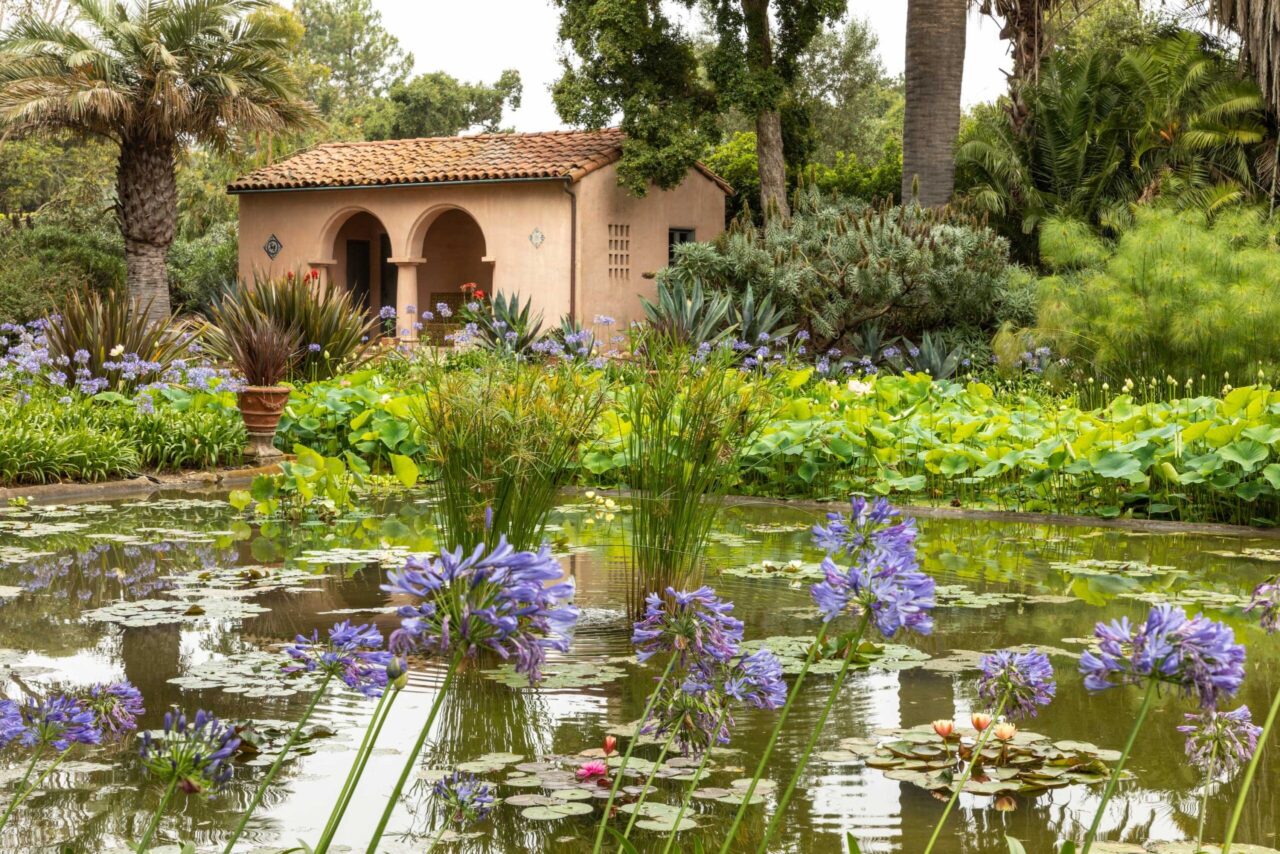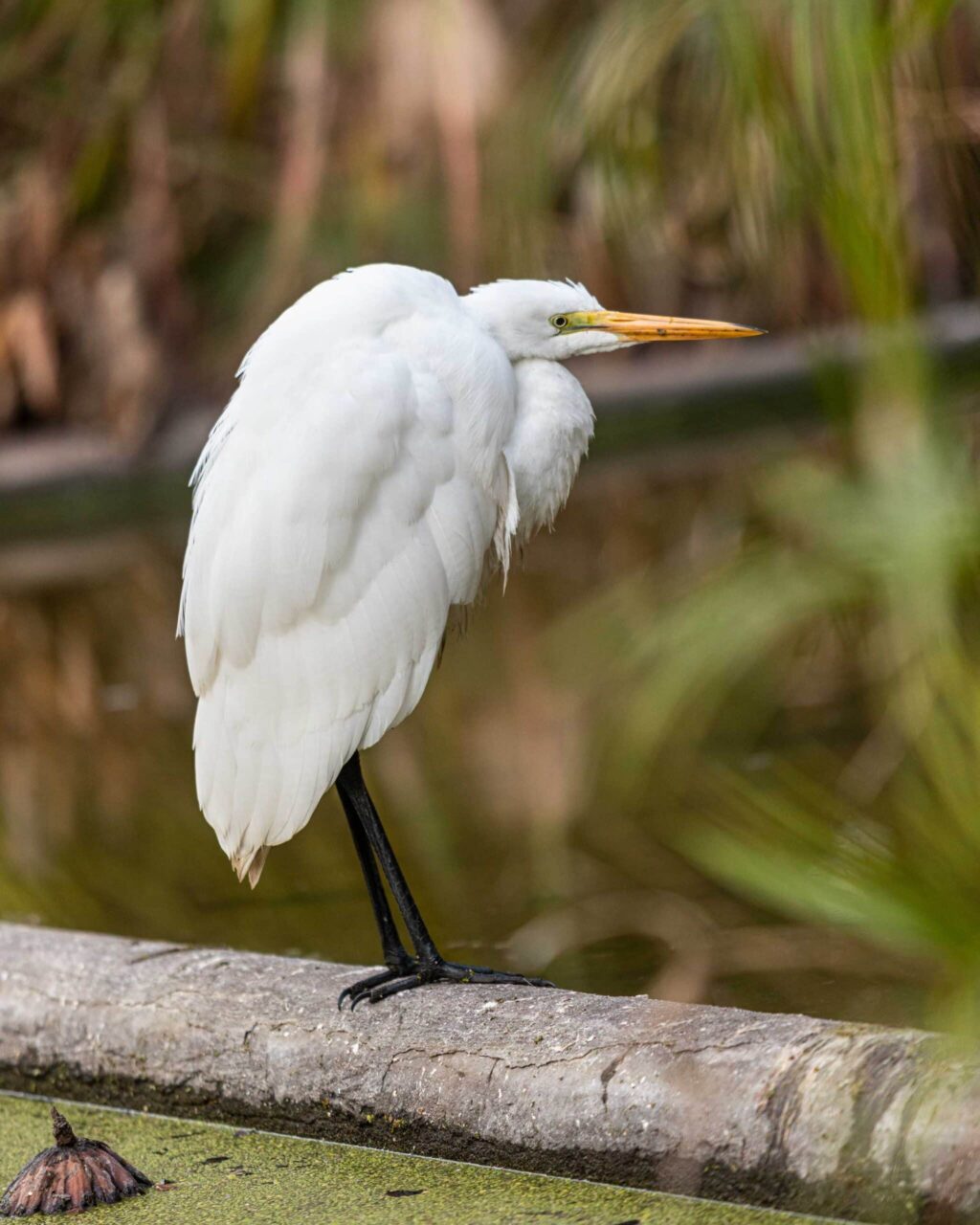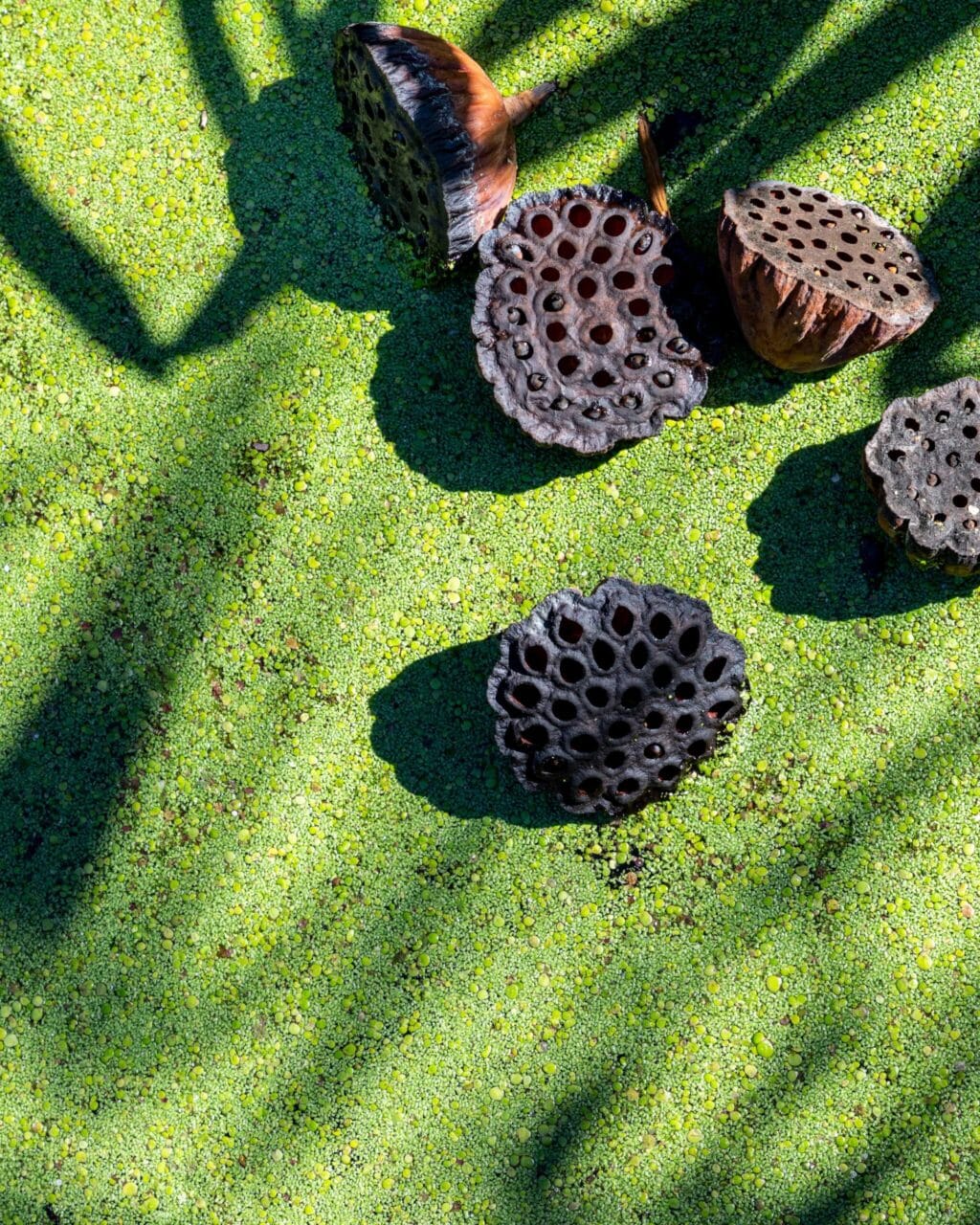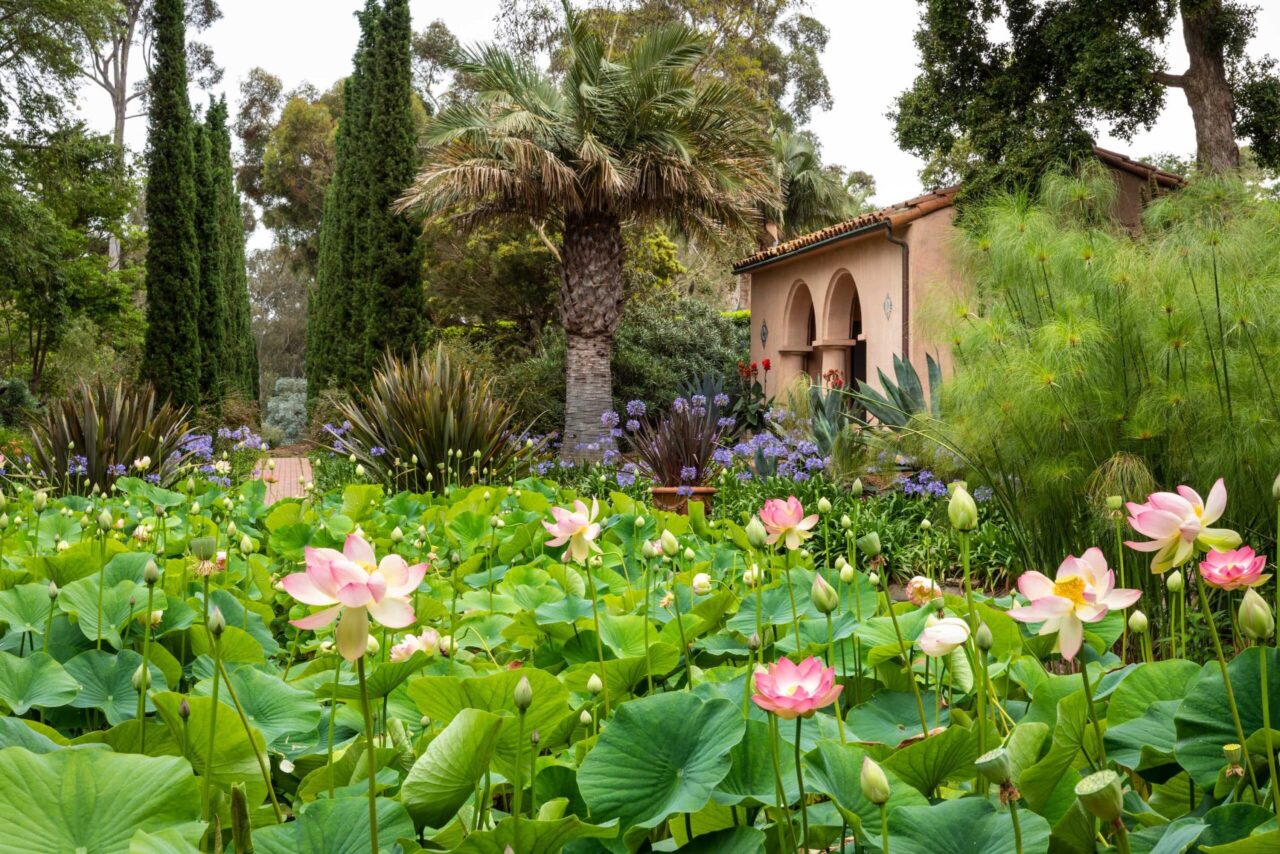Water Garden
Lotusland’s Water Garden is home to a magnificent display of its namesake flower
Water Garden
The Water Garden was originally designed in the 1920s for the Gavit family by George Washington Smith as a Bath House and rectangular swimming pool flanked by two waterlily ponds. By the time Madame Ganna Walska purchased the property the pool had developed a severe foundational leak. Instead of repairing the issue, Madame Walska decided to fill in the pool with soil and gravel, bringing the water level to its current three-foot depth and planted a wide variety of aquatic plants.
Our team is renovating the Lotus Pond in 2023. Overcrowded lotus rhizomes are being dividing and replanted. While the plants typically bloom each summer, we may see fewer flowers this season as the plants establish themselves in the bed.
the
Notable
Species
Lotus
There are only two species of lotus, though there are many cultivars. The more commonly recognized Asian lotus (Nelumbo nucifera) has pink petals, while the petals of the American lotus (N. lutea) are yellow. Flowers open in the morning and close in the afternoon with each bloom lasting just three or four days.
In many spiritual traditions around the world, the lotus is a symbol of life, renewal, and transcendence. It starts as a seed in the mud, symbolizing life and the physical world. Seeds can lie dormant for over one hundred years, symbolizing the promise of renewal. Lotuses grow many feet before emerging into the air and blooming, revealing a delicate flower unscathed by the muddy waters from which it arose, symbolizing transcendence.
Duckweed
Duckweed is a common name given to several species in the aroid subfamily Lemnoideae. All are small floating plants that grow in dense clusters, forming green blankets over still bodies of water. Wolffia arrhiza is a type of duckweed and the world’s smallest flowering plant. Sometimes mistaken for algae, duckweeds are an important food source for waterfowl and fish, and habitat for micro-invertebrates. However, they have the potential to grow too rapidly and can become problematic if widespread, bringing water oxygen levels too low to support healthy aquatic wildlife.
Hardy and Tropical Waterlilies
Many people often confuse lotus (Nelumbo) and waterlilies (Nymphaea). Waterlily leaves, or lily pads, grow floating directly on the water, with a small v-shaped slit at one end to help water run off. Lotus flowers and their mature leaves emerge and extend up and out of the water.
The Water Garden contains both tropical and hardy waterlilies flanking the central Lotus Pond. Tropical waterlilies must be overwintered in heated tanks and grow from a single vertical crown. They typically have more of a variety in flower color than the hardy waterlilies and can bloom either during the day or at night. Flowers are held slightly above the water’s surface.
Hardy waterlilies go dormant in winter but their fleshy horizontal rhizomes can survive cold temperatures. They are available in a smaller range of flower colors, from white to pink, yellow, and orange. Most, but not all, of the flowers float directly on the water’s surface.
Victoria Waterlilies
With enormous spiny pads and mysterious night-blooming flowers, Victoria waterlilies have long captivated those lucky enough to witness this fascinating plant. In habitat, Victoria reside in seasonally flooded backwaters of the Amazonian and Paraná River basins and there are three species in the genus: Victoria amazonica, V. cruziana, and the newly described V. boliviana.
Lotusland’s archives contain invoices and frequent correspondence between Madame Ganna Walska and Dr. John T. Charleson, manager of William Tricker Inc., what is now America’s oldest water garden supplier (est. 1892). Madame Walska’s letters include detailed horticultural inquiries regarding the culture and care of many aquatic plants including lotus, waterlilies, and Victoria. She was especially enamored with Victoria and, after four failed attempts, finally succeeded in growing the plants in the summer of 1955.
Victoria are started from seed at Lotusland’s nursery in the winter. Once the water temperatures in the outdoor ponds are warm enough they are placed in the Water Garden and Cycad Garden ponds. Victoria waterlilies bloom in an intriguing floral display over two nights with female and male structures developing consecutively.
the
Noteworthy
Features
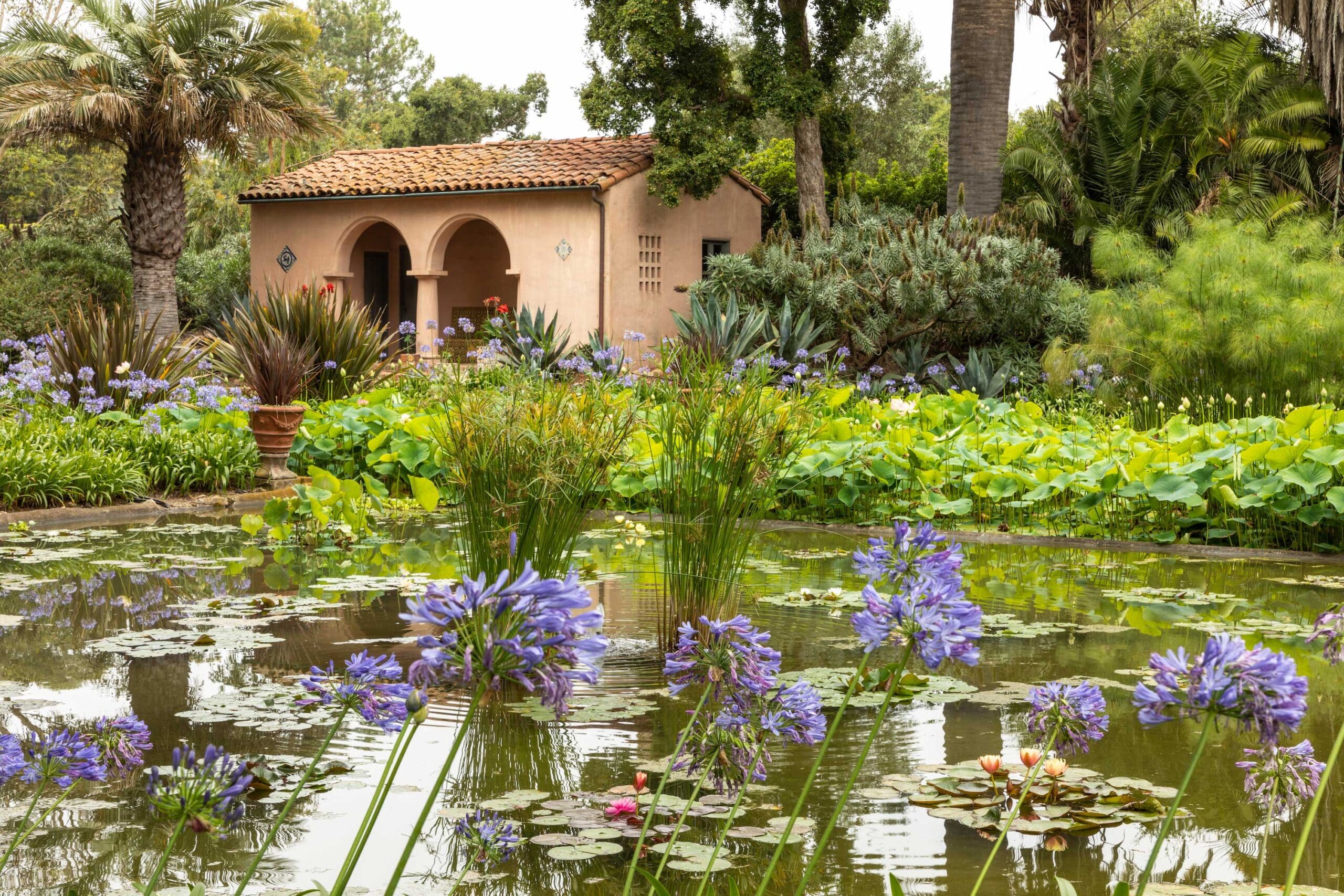
Bath House
The Bath House was designed by Santa Barbara architect George Washington Smith in 1925. Its pillars were copied for the Visitor Center when it was created in 1993. The Bath House and Water Garden are the subjects of many iconic paintings and photographs of Lotusland.
